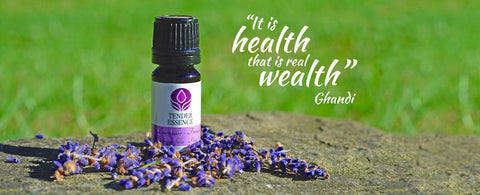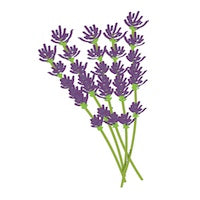Lavender essential oil is a wonder product. Widely regarded as the most useful of all essential oils, it has many beneficial properties and can be used for a range of ailments. It also has a great fragrance and is safe for sensitive skin types. If you’ve never used an essential oil before, then lavender is a great first step into the world of aromatherapy. Even if you’re a regular practitioner there’s always a reason to include lavender in your essential oil kit.

Where does lavender essential oil come from?
Lavender is a flowering plant and grows in gardens across Europe. There are 42 different species, the most common of which is Lavendula Angustifolia. There are many farms that grow lavender just for essential oil production, and the majority of suppliers reside in England, France, Bulgaria and Spain. The plant can be sourced from various soils, locations, climates, and plant species to create oils with different aromas and beneficial uses. Having such a great variety of lavender plants and oils available is part of the reason lavender essential oil is the most popular and common of all essential oils.

Aroma of lavender oil
Lavender is a sweet, floral scent with herbal undertones. If you’ve ever smelt lavender flowers, the oil has the same distinctive aroma. It works wonderfully on its own, or in blends with other oils. Clean and fresh, lavender has a perfumery top note, which means it is a strong initial scent that will fade with time.
Aroma:
Lavender has a fantastic sweet floral scent with herbal undertones. It can be mixed and used in blends with many other essential oils.
Benefits:
Lavenders’ popularity derives from its diverse range of properties, some of these are:
- soothes burns and insect bites (antiseptic and anti-inflammatory
- aides relaxation and sleep
- relieves headaches and is a good neurological balancer
- soothes muscular pain
All these beneficial properties are why Lavender essential oil is crucial for any first aid kit or aromatherapy collection.
Using the oil:
Lavender is good for treating spots, burns and bites when applied in a strong dilution. Essential oils should not be used neat on the skin. For all other benefits mix the oil in small ‘per drop’ quantities, with a carrier oil like Grapeseed or Rice Bran, to make a massage oil.
When used to scent rooms or to influence mood, you can us as follows:
- 3 to 6 drops in your bath water
- fragrance a room by dripping some oil on the radiator (non electric)
- mix the oil in water and add to an oil burner
- add 20 drops to 100ml of lotion or shampoo & shake to add fragrance.
If you suffer any allergic reaction to an essential oil then stop using it. Essential Oils are concentrated plant compounds and should never be consumed (topical use only) and should be avoided when pregnant or on medication.







Leave a comment